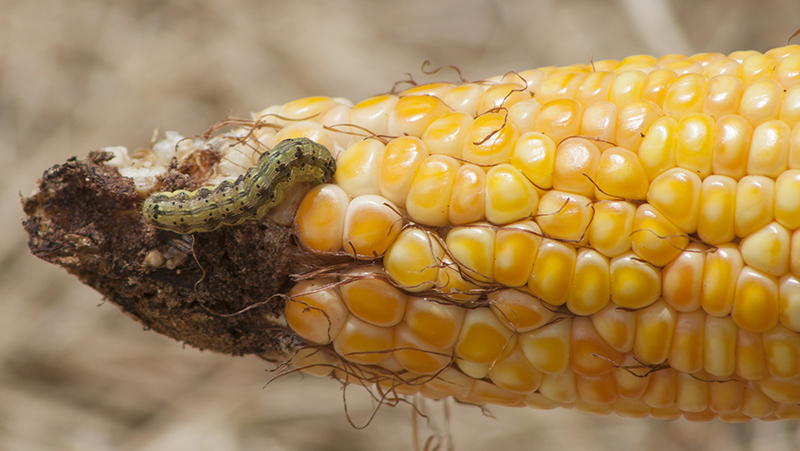Yates Account
Join now
Create a Yates account today!
Sign up to join the Yates Garden Club for monthly e-mails packed with seasonal inspiration, tips for success & exclusive promotions.
Plus if you’re a Garden Club member you can take part in the Yates Growing Community - a blog to share successes, get advice & win prizes in fun challenges along the way!

Forgot password
Enter the email address associated with your account, and we'll email you a new password.
Lepidoptera / Noctuidae
Helicoverpa armigera conferta
(Previously known as Heliothis armigera)

What are Corn Earworms?
Found throughout New Zealand, corn earworms are caterpillars that chew holes into corn cobs and kernels. They also chew patches out of unfolding leaves, causing plants to be stunted.
Corn earworms feed on a very wide range of host plants, so they can cause a lot of damage and defoliation when their population builds up.
When attacking sweetcorn they’re commonly referred to as ‘corn ear worm’; but when feeding on tomato fruit, they’re commonly referred to as ‘tomato fruit worm’.
Overseas, these names describe different species, but in NZ it’s actually the same miscreant causing the trouble in both cases.
The caterpillars that cause the damage are the larvae of ochre-brown nocturnal moths. Because the moths are usually found in the tropics, their range in NZ is partly constrained by frost; but the moths are capable of long-distance flight so they rapidly expand South during warmer weather.
Caterpillars range in colour from light green, to red, to almost black and often have dotted light stripes along their back and sides. Corn earworm pupates below ground to get through the winter, emerging as adult moths between November and March.
In sweetcorn, the most serious damage occurs when the larvae chew the ears and corn kernels. To add insult to injury, the caterpillars leave behind moist skin castings, which can result in mould and leave the corn prone to diseases.
When feeding on tomato fruit, they usually hide under or around the stalks.
Symptoms
- Damage to corn cobs and silks by caterpillars concealed inside the husks.
- Holes chewed by mature caterpillars into tomato or citrus fruit, generally near the calyx.
- Frass (caterpillar poo) is usually visible near the feeding holes.
- Leaf damage or defoliation of trees by young larvae.
- Plants may be yellowed or stunted.
Plants impacted
- Corn / Maize
- Tomatoes
- Capsicum
- Potato
- Beans
- Peas
- Pumpkins / Squash
- Citrus
- Conifers
- Pinus radiata
- Flax














Share
Share this article on social media